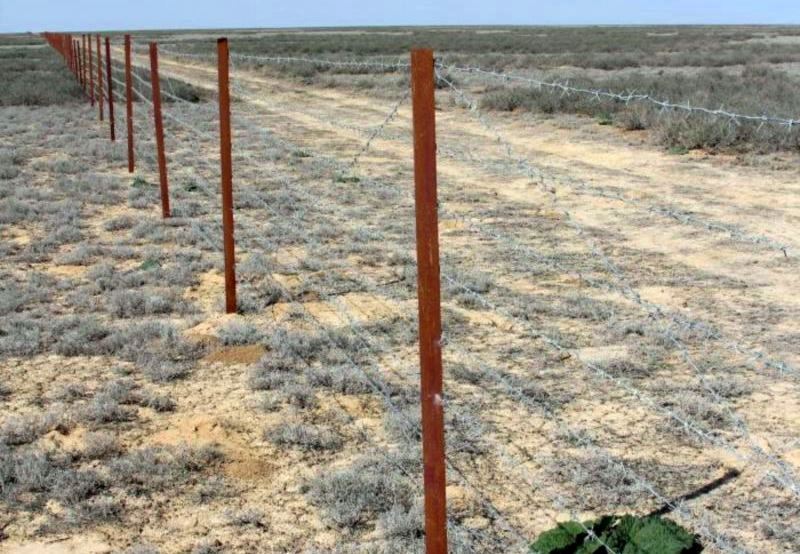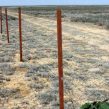
Fresh Border Incidents Underscore Unresolved Problems in Ferghana Valley
Publication: Eurasia Daily Monitor Volume: 9 Issue: 172
By:

Tajikistan’s officials reported that an Uzbekistani border guard entered Tajikistani territory on horseback on September 11 and began filming Tajikistan’s side of the border. After he ignored a command to leave, the Tajikistani side opened fire. The Uzbek border guard was seriously injured. Authorities in Tashkent insist, however, that the border guard was on the Uzbekistani side of the border and that Uzbekistan’s soldiers did not discharge their weapons during the incident (Fergananews.com, September 14).
Similar incidents are frequent along the borders in Central Asia, as the state boundaries were not always clearly set after the collapse of the Soviet Union in 1991, and many segments of the borders remain disputed. The very principle of territorial and administrative division along national lines is alien to the history of Central Asia. States here have never been formed on national principles as the very concept of “nationality” was understood only in relative terms. In 1921, when the indigenous people of Central Asia were asked what their nationality was, they replied “Muslim.” The unsuitability of local conditions to the very principle of territorial division according to nationality was made even worse by the fact that borders were sometimes drawn arbitrarily, without taking ethnic and political realities into account. As a result, Central Asia features around a dozen “disputed territories” that are simultaneously claimed by two titular nations (Igor Rotar, “Under the Green Banner: Islamic Radicals in Russia and the Former Soviet Union,” Religion, State & Society 30(2), June 2002).
The border problem is most acute in the Ferghana valley. This ethnically and culturally complex region is now divided among three countries: Kyrgyzstan, Tajikistan and Uzbekistan. Presently, the international border in the Ferghana valley divides ethnic Uzbeks living in a closely united group close to the border with Uzbekistan between the Osh and Jalal-Abad regions of Kyrgyzstan, as well as Sughd province in Tajikistan.
Despite the local population realities, the Central Asian republics sharing the Ferghana Valley have been making free movement of people within the area increasingly difficult. Dushanbe and Tashkent introduced restrictive visa regimes in 2001. And Uzbekistan planted mines along the border with northern Tajikistan in 2000 in order to hinder drug trafficking and cross-border infiltration by members of the Islamic Movement of Uzbekistan (IMU). However, the mines have caused many civilian casualties. Uzbekistan asserts that it is placing landmines only on its territory, but so far not all the boundaries between Uzbekistan and Tajikistan have been delineated—16 percent of the border still remains disputed. As result, since 2000, a total of 76 people were killed and 81 were injured along Tajikistan’s northern border (Institute for War and Peace Reporting, September 12).
In 1990 and then again in 2010, bloody inter-ethnic clashes erupted in the Osh and Jalal-Abad regions of Kyrgyzstan between the local Uzbeks and Kyrgyz. Moreover, the original cause of the conflict—that the local Uzbeks consider this territory to be historically theirs, while the Kyrgyz are seen as a non-native people and “aliens” there—still has not been resolved. Much of the border has not been marked out so it is easy to stray across. Most Uzbeks in the Kyrgyzstani part of the Ferghana Valley have relatives in Uzbekistan. In addition, the largest market in the Ferghana Valley along the border with Uzbekistan is located in the Kyrgyzstani town of Karasu. Goods for the market are mostly transported from China. The Karasu market provides jobs for many citizens of both Kyrgyzstan and Uzbekistan. Uzbekistani and Kyrgyzstani citizens who live along the border do not require a visa to cross. Border crossings, however, are not an easy procedure because Uzbekistan’s customs officials exact bribes and few border checkpoints exist. Therefore, many local people prefer to cross the border illegally, and a number of established illegal ferries transport people across the border canal near Karasu. But illegal crossings are not safe. Uzbekistani border patrol agents, unlike their Kyrgyzstani counterparts, often shoot smugglers. For example, on September 7, a Kyrgyzstani citizen was shot after he crossed the border in the district of Aravan and walked some 150 meters into Uzbekistan’s territory, reportedly ignoring the Uzbek border guards’ commands to stop (Fergananews, September 7).
“After the massacre [in southern Kyrgyzstan] in 2010, Uzbekistan reinforced its border. Just this year, two citizens of Kyrgyzstan were killed and two were injured at the Kyrgyzstan-Uzbekistan border. During the last five years, more than a dozen so-called ‘smugglers’ died at the border. Most of them were ethnic Uzbeks and, ironically, they were killed by Uzbek border patrol,” Daniil Kislov, the director of the Ferghana News agency, told Jamestown on September 12.
The frontier problem is further complicated because 300 kilometers of the 1,300-kilometer shared border remain disputed. There are also two large Uzbekistani enclaves inside Kyrgyzstan: Sokh and Shahimardan. About 50,000 people live there. Additionally, the Kyrgyzstani village of Barak (about 600 people) is situated inside Uzbekistan. “The lack of work locally and present difficulties of accessing jobs in Kyrgyzstan, where many Sokh and Shahimardan men used to work, mean that labor migration to Russia is a major source of livelihood [for these citizens of Uzbekistan]. The question of the border, and in particular the fact that several areas remain un-delimited has created some tensions, particularly in southern Sokh. For instance, the large [Uzbekistani] village of Khushiar, on the border with Kyrgyzstan, has very little grazing land of its own, and both this village and upstream Kyrgyz villages are dependent upon a shared water supply. This has periodically created tensions,” Dr. Madeleine Reevs, an anthropologist from Manchester University, who specializes in the border problems in the Ferghana Valley, told Jamestown on September 13.
Tajikistani and Kyrgyzstani citizens, on the other hand, do not need a visa to cross into each others’ countries, and no checkpoints exist on the shared border, but even in this situation incidents sometimes occur along the frontier. Since the beginning of this year, four local conflicts have occurred on the border. The main problem that remains is that of the 970-kilometer border, half remains disputed, while water distribution rights are the main source of conflict in this disputed territory. The author visited the Tajikistan-Kyrgyzstan border repeatedly between 2000 and 2010 and witnessed that both Kyrgyz and Tajiks attempted to take control of irrigation canals in the non-delimited areas.
Inter-ethnic relations in the Ferghana Valley are thus quite tense. The valley continues to be one of the most volatile areas in Central Asia. In 1989, anti-Jewish pogroms took place in Andijan (Uzbekistan), which led to an exodus of the Jewish population from that city. That same year, inter-ethnic clashes between Uzbeks and Meskhetian Turks broke out in the Uzbekistani city of Ferghana, resulting in 150 casualties and the mass exodus of Meskhetian Turks from Uzbekistan. Moreover, according to unofficial data, in 1990 and 2010, inter-ethnic clashes between local Uzbeks and Kyrgyz claimed more than 2,000 lives in Osh and Jalal-Abad provinces of Kyrgyzstan (see EDM January 4, 2005; June 22). With the addition of the aforementioned series of still unresolved border problems, the situation in the Ferghana Valley continues to be dangerous to both the states and peoples involved.




